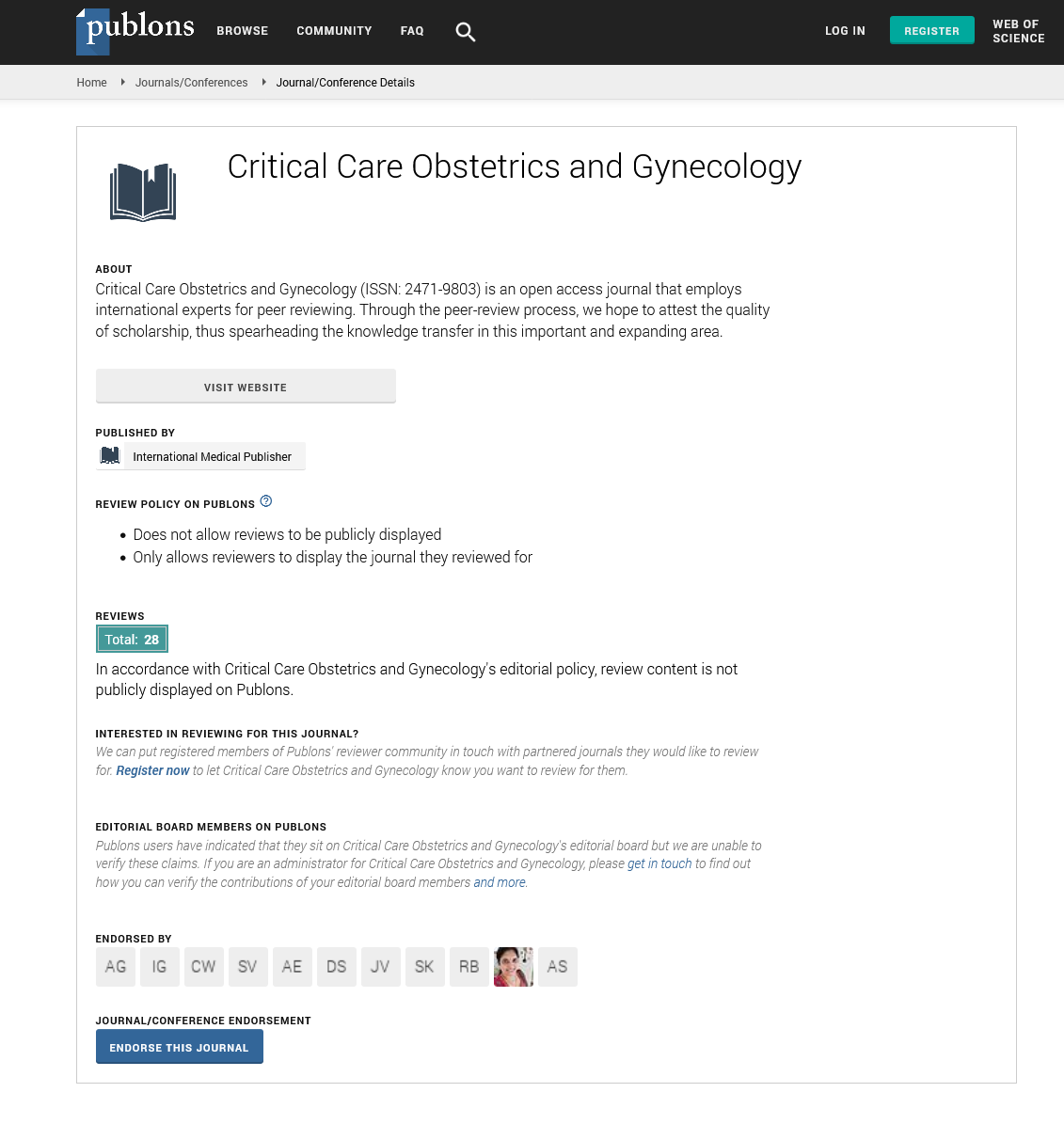ISSN : 2471-9803
Critical Care Obstetrics and Gynecology
Survival outcomes of adjuvant therapy in uterine-confined endometrial cancer which has serous papillary and clear cell histology: radiotherapy versus chemotherapy
European Congress on Vaccines & Vaccination and Gynecologic Oncology
October 26 -27, 2018 Budapest , Hungary
Miseon Kim, Byung Su Kwon, Ha Kyun Chang, Seungmee Lee, Suk-Joon Chang, Jin Young Choi, Sang-Yoon Park, Maria Lee, Hee-Sug Ryu and Yong Beom Kim
CHA Gangnam Medical Center, CHA University School of Medicine, Republic of Korea Pusan National University Hospital, Republic of Korea Center for Uterine Cancer-National Cancer Center, Goyang, Republic of Korea Keimyung University, Republic of Korea Ajou University, Republic of Korea Chungbuk National University Hospital, Republic of Korea Seoul National University, Republic of Korea Seoul National University Bundang Hospital, Republic of Korea
Posters & Accepted Abstracts: Crit Care Obst & Gyne
DOI: 10.21767/2471-9803-C1-003
Abstract
Objective: To evaluate the survival outcomes of adjuvant therapy in uterine-confined endometrial cancer with serous papillary and clear cell histology Methods: Medical records of 80 women who underwent surgical staging including hysterectomy and bilateral salpingo-oophorectomy between Nov’ 2004 and Dec’ 2017 were retrospectively reviewed. All study population was pathologically diagnosed as serous papillary and clear cell endometrial carcinoma confined to uterus after surgery. Survival outcomes were calculated by Kaplan-Meier method and compared using log-rank test between the women received radiotherapy and chemotherapy. Results: 54 (67.5%) and 26 (32.5%) women were confirmed as serous papillary and clear cell histology after surgery, respectively. Adjuvant therapy was performed in 59/80 (73.8%) women: 25 of radiotherapy and 34 of chemotherapy. High level of preoperative serum CA-125 (25.1±20.2 vs. 11.5±6.5 IU/mL, p<0.001), open surgery (42 (71.2%) vs. 6 (28.6%), p=0.001), myometrium invasion >1/2 (20 (33.9%) vs. 0, p=0.002) and lymphovascular space invasion (LVSI (lymphovascular space invasion), 17 (28.8%) vs. 1 (4.8%), p=0.023) were frequent in the women with adjuvant therapy. However, pathological results including histology type, myometrial invasion ≥1/2 and LVSI were not different between the women received radiotherapy and chemotherapy. Five-year progression-free survival (78.9 vs. 80.1%, p>0.999) and overall survival (77.5 vs. 87.8%, p=0.373) were also similar in the two groups. Neither radiotherapy (Hazard ratio (HR) 1.810, 95% confidence interval (CI) 0.297-11.027; p=0.520) nor chemotherapy (HR 1.638, 95% CI 0.288-9.321; p=0.578) was independent associated factor for disease recurrence in multivariate analysis. Conclusion: Our findings show that radiotherapy and chemotherapy have similar survival outcomes in uterine-confined endometrial cancer with serous papillary and clear cell histology. Further study with stratified analysis by myometrial invasion or LVSI was required.
Biography
E-mail:
shemme@naver.com miseonkim@chamc.co.kr
Google Scholar citation report
Citations : 148
Critical Care Obstetrics and Gynecology received 148 citations as per Google Scholar report
Critical Care Obstetrics and Gynecology peer review process verified at publons
Abstracted/Indexed in
- Google Scholar
- China National Knowledge Infrastructure (CNKI)
- WorldCat
- Publons
- Geneva Foundation for Medical Education and Research
- Secret Search Engine Labs
Open Access Journals
- Aquaculture & Veterinary Science
- Chemistry & Chemical Sciences
- Clinical Sciences
- Engineering
- General Science
- Genetics & Molecular Biology
- Health Care & Nursing
- Immunology & Microbiology
- Materials Science
- Mathematics & Physics
- Medical Sciences
- Neurology & Psychiatry
- Oncology & Cancer Science
- Pharmaceutical Sciences
